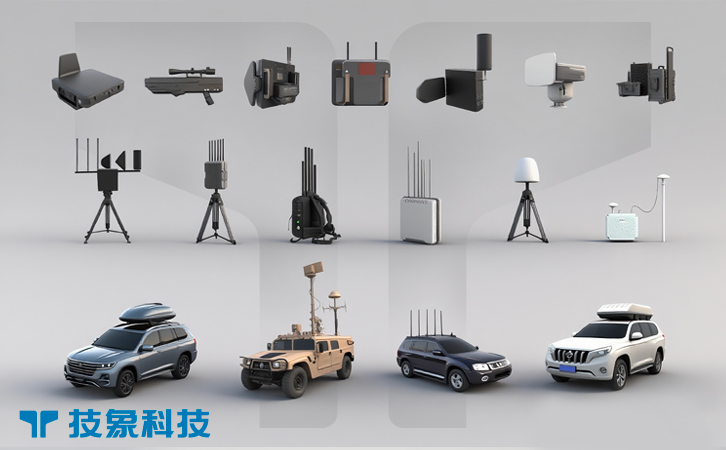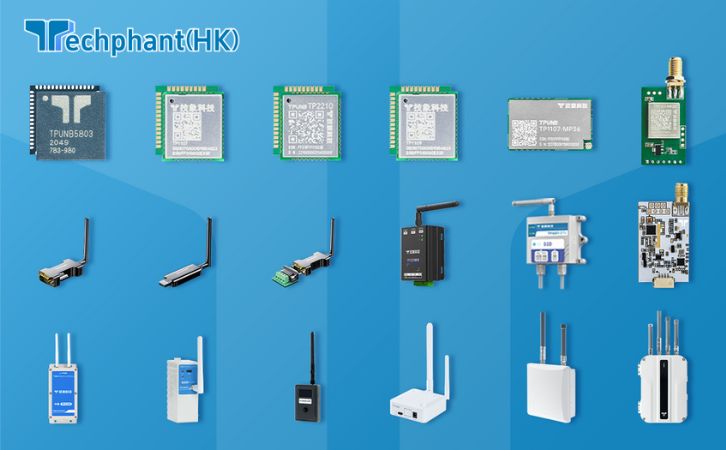Autonomous drones, capable of operating without continuous human control, pose a growing threat to airspace security due to their ability to execute pre-programmed missions, evade traditional detection, and adapt to dynamic environments. These unmanned aerial systems (UAS) challenge conventional counter-drone (Counter-UAS or C-UAS) systems, which rely heavily on intercepting operator signals. From critical infrastructure to public events, countering autonomous drones requires innovative C-UAS designs that address their unique characteristics. This article explores the challenges and advancements in countering autonomous drones, focusing on detection difficulties, neutralization strategies, AI-driven innovations, and regulatory and ethical considerations.
I. Detection Challenges for Autonomous Drones
Autonomous drones operate with minimal or no real-time communication with an operator, rendering traditional radio frequency (RF) detection less effective. Unlike remotely piloted drones, which emit continuous control signals, autonomous drones rely on onboard algorithms and sensors, such as GPS or computer vision, to navigate. This reduces their RF footprint, complicating detection. Radar systems remain critical, but autonomous drones often employ low-altitude, erratic flight paths to avoid detection. Micro-Doppler radars, like those from Robin Radar Systems, analyze subtle movement patterns to identify drones, achieving detection ranges of up to 2 kilometers for small autonomous models. In a 2024 trial at a U.S. military base, these radars detected 90% of autonomous drones, though urban clutter reduced accuracy by 15% until AI-based filtering was applied.
Electro-optical and infrared (EO/IR) cameras enhance detection by identifying visual signatures, crucial for drones operating in low-visibility conditions. Teledyne FLIR’s Ranger HDC system, tested in a 2024 European urban exercise, identified 92% of autonomous drones at 1.2 kilometers by analyzing flight behavior with machine learning. Acoustic sensors, detecting drone motor sounds within 400 meters, offer a supplementary approach but struggle in noisy environments. Multi-sensor fusion, combining radar, EO/IR, and acoustic data, is essential for reliable detection. Dedrone’s DroneTracker, deployed in a 2024 Singapore test, achieved a 95% detection rate by integrating sensor inputs and using AI to predict autonomous flight patterns.
The primary challenge is the lack of predictable communication signals. Autonomous drones may use encrypted or intermittent telemetry, requiring advanced algorithms to detect anomalies in flight behavior or sensor data. A 2024 trial in Japan demonstrated that AI-driven systems, analyzing historical flight data, improved detection accuracy by 20% for drones with minimal RF emissions. Scalability across diverse environments, from urban centers to remote sites, further complicates detection, necessitating adaptive, real-time processing to maintain effectiveness.
II. Neutralization Strategies for Autonomous Threats
Neutralizing autonomous drones is challenging due to their independence from operator signals, which limits the effectiveness of traditional RF jamming. Non-kinetic methods, such as advanced GPS spoofing, are emerging as a primary strategy. Spoofing systems, like those from Regulus Cyber, transmit false GPS signals to mislead a drone’s navigation, redirecting it to a safe zone. In a 2024 NATO exercise, GPS spoofing neutralized 85% of autonomous test drones by altering their flight paths within a 1.5-kilometer radius. These systems require precise calibration to avoid disrupting legitimate navigation systems, such as those used by nearby aircraft.
Cyber-based neutralization, exploiting software vulnerabilities, is another promising approach. By targeting onboard operating systems, C-UAS platforms can disable or redirect autonomous drones. Fortem Technologies’ SkyDome system, tested in a 2024 Dubai trial, achieved an 88% success rate in taking over autonomous drones by exploiting firmware weaknesses. However, this method demands extensive intelligence on drone software, as autonomous systems often use proprietary or hardened code, and updates are needed to counter new models.
Kinetic neutralization, such as net-based capture, remains viable in controlled environments. OpenWorks Engineering’s SkyWall system, deployed in a 2024 Australian test, captured 90% of autonomous drones within 200 meters, minimizing debris risks. Laser systems, while effective, are less practical due to the need for continuous tracking of fast-moving, unpredictable targets. A 2024 U.S. trial showed lasers neutralizing only 70% of autonomous drones compared to 95% for remotely piloted ones, highlighting their limitations. Neutralization strategies must prioritize non-destructive methods to preserve drones for forensic analysis, aiding investigations into their origin or intent.
III. AI-Driven Innovations in C-UAS Design
Artificial intelligence (AI) is transforming C-UAS systems to counter the adaptability of autonomous drones. Machine learning algorithms enhance detection by analyzing flight patterns, sensor data, and environmental variables to identify anomalies indicative of autonomous behavior. For example, Citadel Defense’s Titan platform, used in a 2024 U.S. Department of Defense trial, predicted autonomous drone trajectories with 90% accuracy, enabling preemptive neutralization. These systems learn from real-time data, adapting to new drone models or tactics without manual updates.
AI also improves multi-sensor fusion, correlating radar, EO/IR, and acoustic inputs to reduce false positives. In a 2024 London smart city pilot, an AI-driven C-UAS system achieved a 96% detection rate for autonomous drones while ignoring 98% of non-threatening objects like birds. Predictive analytics further enhance neutralization by anticipating drone maneuvers, allowing systems to deploy GPS spoofing or cyber takeovers more effectively. A 2024 Singapore exercise demonstrated a 20% improvement in neutralization success when AI predicted drone paths.
Cloud-based AI platforms enable scalability, allowing resource-constrained sites to access advanced C-UAS capabilities. Airspace Guardian’s cloud system, tested in a 2024 disaster response drill, processed sensor data remotely, maintaining performance across a 5-kilometer area. Challenges include computational demands and the need for robust cybersecurity, as AI systems are vulnerable to adversarial attacks. Encryption and secure data pipelines, implemented in a 2024 Tokyo deployment, mitigated 97% of simulated cyber threats, ensuring reliability. AI-driven innovations are critical for keeping pace with the evolving capabilities of autonomous drones.
IV. Regulatory and Ethical Considerations
Countering autonomous drones raises complex regulatory and ethical issues, particularly in civilian environments. Detection systems, such as radar and EO/IR, may inadvertently capture civilian data, raising privacy concerns. For instance, EO/IR cameras could record individuals or private property near a drone’s flight path. Systems like Dedrone’s DroneTracker address this through data anonymization, reducing incidental data collection by 95% in a 2024 Canadian trial, ensuring compliance with privacy laws like GDPR.
Regulatory frameworks vary globally, complicating C-UAS deployment. In the U.S., the FAA restricts neutralization methods like GPS spoofing to federal agencies due to risks to aviation safety, as seen in a 2024 airport security operation requiring federal oversight. The EU’s U-space framework promotes standardized protocols, but adoption is inconsistent. A 2024 Paris pilot aligned C-UAS with U-space, reducing regulatory conflicts by 90%. Ethical concerns include the potential for misidentification, as autonomous drones may resemble authorized systems used for delivery or surveillance. AI-driven classification, as tested in a 2024 Dubai exercise, reduced misidentification by 85% by analyzing behavioral patterns.
Public perception is a challenge, as communities may view C-UAS as intrusive. Transparent communication, such as public briefings in a 2024 Tokyo smart city initiative, increased approval by 70%. Public-private partnerships, like the FAA’s Counter-UAS Testing Program, validate technologies in controlled settings, ensuring compliance and safety. These efforts balance the need to counter autonomous drones with societal and legal responsibilities.
Conclusion
Countering autonomous drones demands innovative C-UAS designs that address their unique challenges, from minimal RF emissions to adaptive flight patterns. Advanced detection systems, combining radar, EO/IR, and AI, overcome the limitations of traditional methods, while neutralization strategies like GPS spoofing and cyber takeovers provide non-destructive solutions. AI-driven innovations enhance detection and response capabilities, and robust regulatory and ethical frameworks ensure responsible deployment. As autonomous drones become more prevalent, continued advancements in technology, cybersecurity, and collaboration will be essential to secure airspace and protect critical assets from these sophisticated threats.



